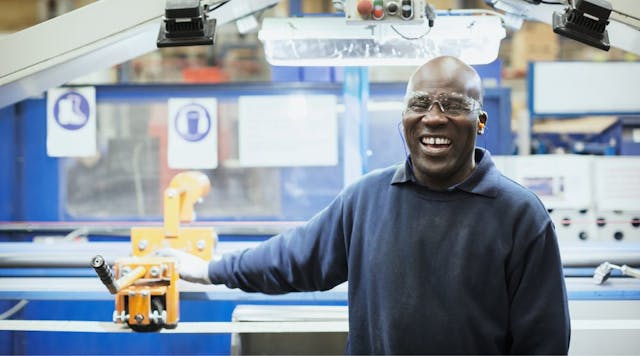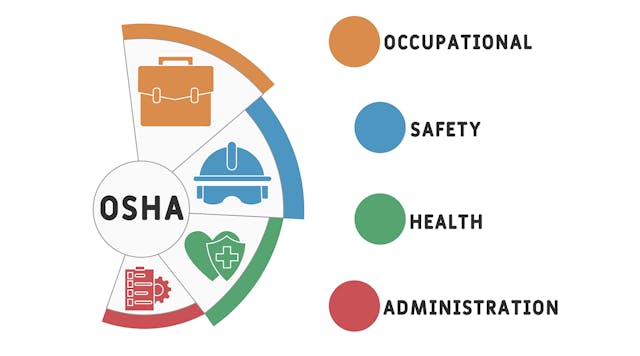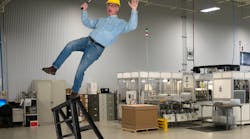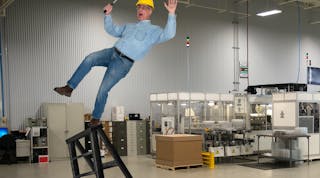Seasonal and temporary hires are a necessity for a number of industries from manufacturing and warehousing down to shipping, logistics, and even agriculture. They’re the lifeblood that carries businesses through their busiest seasons.
Yet as businesses staff up to meet increased demand in summer months through the holidays, it can be difficult to maintain the same standard of safety as long-term hires. With this lack of consistency in safety practices, it’s no surprise that summer months see higher rates of workplace accidents.
By investing in workplace safety measures and leveraging emerging technology, companies can mitigate accidents — particularly for seasonal workers — which can save money in the long run and simultaneously support long-term staffing needs. At the end of the day, an engaged workforce that feels part of a broader mission is more productive and, just as important, safer.
What Makes Seasonal Work So Dangerous
When companies are considering their workplace safety protocols, too often they’re thinking about their long-term staff. Employees that are committed to a company for the long haul are easy to invest in, because they’re given the luxury of time. The training process can be gradual and iterative, with frequent checkpoints and benchmarks that can be adjusted over time.
Temporary and seasonal hires aren’t afforded that same luxury. Workers that are hired for a few months need to be able to hit the ground running and contribute immediately to meet the demand for which they were hired.
This urgency creates a number of issues that lead to a spike in workplace accidents. The first is a collapsed training timeline; workers aren’t exposed to iterative training that compounds on itself over time. The second is an unfamiliarity with the workplace environment: not understanding the building layout, its machinery, coworkers and more can lead to confusion and carelessness which can cause accidents.
Urgency can also lead to overexertion and unsafe physical strain, as seasonal or temporary workers feel the need to accomplish tasks quickly given their limited time on the job.
Lastly, temporary workers aren’t as engaged as long-time employees. Whether it’s because they’re younger workers — college students working a summer job — or they simply see the job as temporary and thus not worth investing themselves in, disengagement among seasonal workers can lead to increased accidents.
How Technology Can Mitigate These Risks
Technology mitigation
The causes of workplace accidents are myriad, but thankfully there are ways to address mitigation for nearly all of them, primarily through technology.
Accident mitigation begins with proper training. This imperative is particularly important for seasonal and temporary workers who need to learn everything they need to perform their jobs safely in a shorter period of time.
In the recent past, training and orientation would be handled by a single all-hands meeting, one that may have included a safety video produced years earlier. This form of training can be easy to ignore and may contain information irrelevant to the specific position a temporary worker is tasked with.
Rather than attempting to encapsulate all information in one session, trainings can be short videos tailored to specific jobs, and even more granularly into specific tasks. This form of bite-sized training is more engaging, particularly for younger workers, and distills safety information into its most direct and relevant form. It can also be rolled out as needed, if an employee begins working in a different part of a warehouse that handles different inventory, for example, they can be shown specific safety precautions to take in that area.
Of all the workplace injuries, musculoskeletal disorders, or MSDs, are some of the most common and the most costly, costing businesses $17 billion in 2022 alone. The primary cause of MSDs is risky body movements, poor lifting technique, and other undue strain put on the body for prolonged periods of time.
There are multiple technological interventions that can be used to mitigate MSDs. First and foremost, wearables can be used to track body movements. Leveraging sensors can provide data on posture, speed and duration of movements to identify risks. Wearable devices can even provide haptic feedback to correct risky movements in real-time.
What’s more, wearables can be used to track other physical data beyond movements. Heart rate monitoring, temperature (of both the worker and the environment), and duration of movement tracking can identify when a worker is overexerting themselves and can remind them to break or hydrate.
Even in the training process, wearables can be leveraged to provide personalized, point-in-time feedback on a worker’s activities. This closed loop system gives the worker focused attention and corrective insights on how best to perform their duties in the safest way possible.
Technology can also be used to facilitate and encourage better communication, leveraging the modalities workers are already comfortable with.
The benefits of an integrated communication platform are twofold. First and foremost, it gives workers a platform to ask questions and receive vital information in real time. Secondly, and perhaps most importantly, it provides a level of engagement with the company and the job. As a temporary or seasonal worker it can be easy to feel like an outsider within an organization. Being in constant communication with your team, however, means knowing that you are valued and part of a larger workforce.
When you look at the statistics, disengaged employees have a 64% higher accident rate than engaged workers. Something as simple as a platform for communication can provide that much needed level of engagement that can reduce workplace accidents.
Why Protecting Seasonal Workers is a Smart Business Decision
Though protecting seasonal or temporary workers may seem like an afterthought for many businesses, the truth is that by investing in better training and preventative measures for those workers, it benefits the business in the long run.
Cost comes in many forms, and first and foremost is the cost of compensation for workplace injuries. In 2021, it was estimated that businesses were losing roughly $1 billion a week due to these expenditures.
However, even beyond the payout costs associated with workplace injuries, the gains that companies can make with an engaged workforce can’t be understated. According to a Gallup report, companies with an engaged workforce are 21% more profitable. Not only that, companies that score highly in customer experience have 60% more engaged employees.
In the long run, investing in proper training and safety for seasonal and temporary employees — and the technologies that can enable the most effective training, communication, and engagement — is not only the right thing to do, it’s the right business decision.
Carrie Merck, Director of R&D at Ansell Inteliorz.





































































